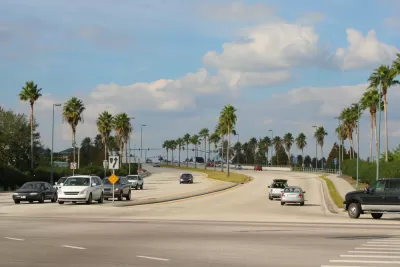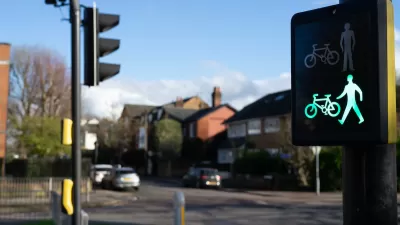Jeff Speck, author of Walkable City, argues that reducing the width of traffic lanes would be a panacea for the disastrous public health outcomes of traffic safety.

Jeff Speck makes a strong statement in an article for CityLab: "the single best thing we can do for the health, wealth, and integrity of this great nation is to forbid the construction, ever again, of any traffic lane wider than 10 feet."
The article begins by setting the history of the 12-foot lane and the agencies that have designed wide lanes despite the consequences. Many cities design streets with lanes wider than ten feet, according to Speck, and "states and counties almost always apply a 12-foot standard."
Speck goes on to address the consequences of that choice: "Why do they do this? Because they believe that wider lanes are safer. And in this belief, they are dead wrong. Or, to be more accurate, they are wrong, and thousands of Americans are dead."
Speck goes on to detail the errors in understanding and judgment that allow for 12-foot lanes as well as "evidence compiled by traffic engineers, for traffic engineers" against 12-foot lanes.
FULL STORY: Why 12-Foot Traffic Lanes Are Disastrous for Safety and Must Be Replaced Now

Planetizen Federal Action Tracker
A weekly monitor of how Trump’s orders and actions are impacting planners and planning in America.

Restaurant Patios Were a Pandemic Win — Why Were They so Hard to Keep?
Social distancing requirements and changes in travel patterns prompted cities to pilot new uses for street and sidewalk space. Then it got complicated.

Map: Where Senate Republicans Want to Sell Your Public Lands
For public land advocates, the Senate Republicans’ proposal to sell millions of acres of public land in the West is “the biggest fight of their careers.”

Maui's Vacation Rental Debate Turns Ugly
Verbal attacks, misinformation campaigns and fistfights plague a high-stakes debate to convert thousands of vacation rentals into long-term housing.

San Francisco Suspends Traffic Calming Amidst Record Deaths
Citing “a challenging fiscal landscape,” the city will cease the program on the heels of 42 traffic deaths, including 24 pedestrians.

California Homeless Arrests, Citations Spike After Ruling
An investigation reveals that anti-homeless actions increased up to 500% after Grants Pass v. Johnson — even in cities claiming no policy change.
Urban Design for Planners 1: Software Tools
This six-course series explores essential urban design concepts using open source software and equips planners with the tools they need to participate fully in the urban design process.
Planning for Universal Design
Learn the tools for implementing Universal Design in planning regulations.
Heyer Gruel & Associates PA
JM Goldson LLC
Custer County Colorado
City of Camden Redevelopment Agency
City of Astoria
Transportation Research & Education Center (TREC) at Portland State University
Camden Redevelopment Agency
City of Claremont
Municipality of Princeton (NJ)




























